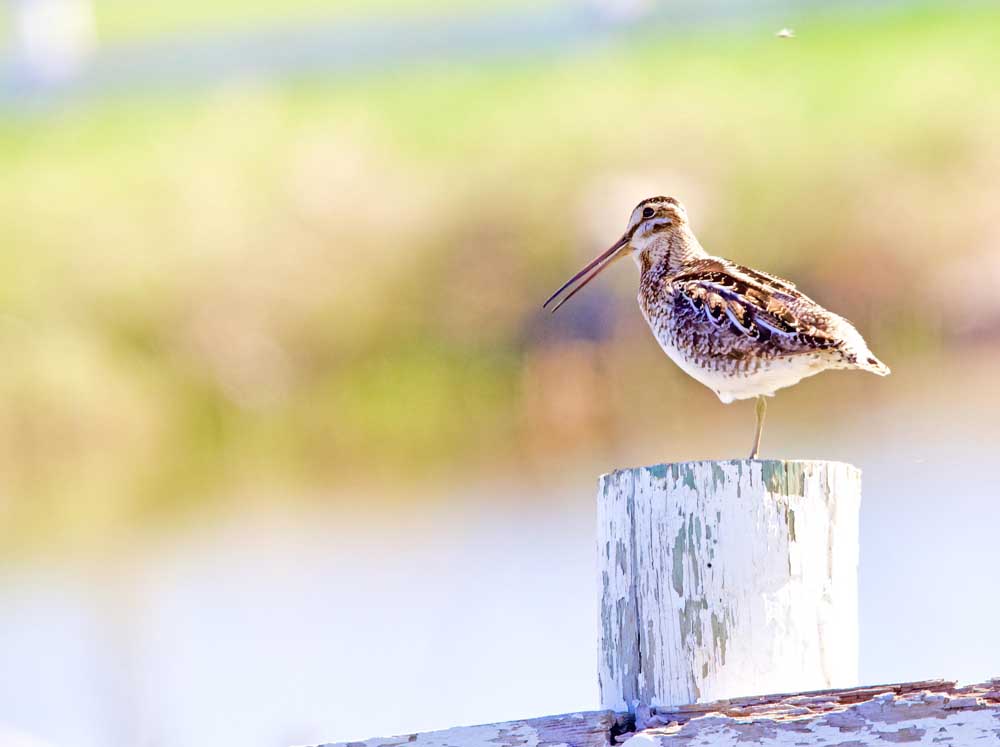Birding: More early winter news from the field: Gifts from the birds
Published 12:38 pm Sunday, December 11, 2022

- Wilson Snipe are being seen in Oysterville. The first one I saw was sitting in the middle of Territory Rd. Look for them in the Oysterville field/wetland.
As I mentioned last week, there is a lot happening bird wise here on the Long Beach Peninsula. Every day is different, and every day is rewarding. This is the season of the king tides and the annual Christmas count, too, which always adds to the excitement and happenings in the land of birding. News from the field reflects my experiences birding in various places on the peninsula as well as in my backyard. I think of all my birding experiences as gifts from the birds.
Trending
The Anna’s hummingbirds are working harder now than at other times of the year to find nectar and insects to sustain them through the winter months. As we know, hummingbird feeders filled with sweet, homemade sugar water help to sustain the Anna’s throughout the winter season. I see three daily. One, a male, likes to be in charge. He chases the other two away even though there are two feeders separated from one another. He generally assumes a viewing position on the tip of shrub so he can see both feeders. This doesn’t seem to happen in the spring when feeders aren’t their main source of nectar. Occasionally, two of the birds will sit quietly on the larger feeder and sip for a bit. Maybe two of the birds are a pair that are waiting for the right moment to set up housekeeping. We know they can be early nesters! This is, of course, speculation on my part!
Birds seen on the road and the roadsides are usually there to pick up grit. Many birds that eat food with hard substances, such as seeds or nuts, pick up grit to help their gizzard pulverize their food into smaller digestible bits. Song sparrows, fox sparrows and spotted towhees are among those species I see on the roadsides these days. Birds that eat fruit with hard seeds may also be seen gathering grit. Varied thrushes, for example, are also foraging on the sides of the roads these days. They switch to fruit and nuts in the fall and winter. Check roads with exposed dirt on the sides.
Snow geese — about 21 of them visited the Peninsula for a few weeks. They were foraging daily in the fields of Tarlatt of the South Bay Unit and on occasion in the large open field next door located along Sandridge Road, which is often a resting place for hundreds of Canada geese, cackling geese and other waterfowl. They didn’t stay long, and I suspect it was because hunting season is on. These white geese with the black wing tips are a treasure. Size-wise, they are just a little smaller than a domestic goose. Our most likely chance to see them is in the winter. If you did see them while they were here, you might have noticed some darker birds among the snow-white geese. If so, you were looking at two color forms, white and blue and maybe some in-between in color. At one time, the blue morph was thought to be a separate species called the blue goose.
Trending
Shorebirds abound on the mudflats of Willapa Bay, especially at Leadbetter Point. Thousands of Dunlins have been foraging along with western and least sandpipers. There are so many birds using their bills to poke up and down in the mud for a tasty morsel that it seems as if the land is in motion. I also counted 30 or more black-bellied plover and about 25 semi-palmated plover. Great blue herons were also foraging in large numbers and scattered across the mudflat were a few bald eagles either sitting on a log, perched on a pole, or sitting on a mudflat just waiting for an opportunity to grab a tasty duck or shorebird for a snack! Green-winged teal, mallards, northern pintails, and American wigeon were numerous.
The November king tides happened, too. As always, they make for interesting birding. On the first day of the high tide 50-plus green-winged teal foraged on the goodies churned up the king tide in the wetlands, along with mallards, one great-blue heron and a great egret. To my surprise, songbirds were feeding in large numbers in the wetlands too, including several song sparrows, fox sparrows, dark-eyed juncos and Steller’s jays.
A drive to Oysterville last week produced two Wilson’s snipes, and an American kestrel. Green-winged teal, northern pintail, American wigeon and mallards were resting in the vegetation close to shore.
Birding is excellent right now. It is a good time to go for a drive or a walk on the Long Beach Peninsula. It is a good time to enjoy gifts from the birds. There is a lot to see. Happy birding!









